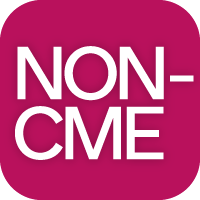Back
Abstract Session
Rheumatoid arthritis (RA)
Session: Abstracts: RA – Animal Models (2539–2544)
2544: Spatial Transcriptomics Suggests Synovial Macrophage Niches Are Sexually Dimorphic in a Mouse Inflammatory Arthritis Model
Monday, November 18, 2024
2:15 PM – 2:30 PM Eastern Time
Location: Room 152A
- RB
Richard Bell, PhD
Hospital for Special Surgery
New York, New York, United States
Presenting Author(s)
Richard Bell1, Ruoxi Yuan2, Mary Huang2, Ewurama Cann2, Chao Yang2, Franck Barrat1 and Lionel Ivashkiv1, 1Hospital for Special Surgery, New York, NY, 2HSS, New York, NY
Background/Purpose: Monocytes and Macrophages (MФ) play a key pathogenic role in Rheumatoid Arthritis (RA), a disease that exhibits female sex bias. Recent work using scRNAseq has defined putative pathogenic synovial MФ subtypes in RA. It is not known whether these MФ subtypes exhibit sexually dimorphic gene expression that can contribute to female sex bias. Further, spatial organization of macrophages, their functional role in driving inflammation and the link to sex differences is unknown. We tested the hypothesis that MФ subsets organize into distinct niches in the male and female synovium.
Methods: Zymosan induced arthritis (ZIA) was induced via intra-articular injection of 180 ug of zymosan in female and male, WT and Tg8 (transgenic for human TLR8) mice using a protocol approved by the Weill Cornell Medicine IACUC. scRNAseq of synovial tissue CD45+ cells depleted of neutrophils at D2, D7, D14, and D28 was performed. DEGs with GSEA between female and male mice was performed. We also performed histologic analysis at D7 and D28. Spatial transcriptomics was performed on D7 with the Xenium platform (10 x Genomics) Mouse Tissue Atlas panel of 350 gene targets. QC, normalization, cell typing, and niche analysis were performed in R. Two-way ANOVA’s with Tukey’s post-hoc tests was used.
Results: We found Tg8 females had significantly increased synovial area (Fig 1A) and synovial cells counts (Fig 1B and arrow in C) compared to both Tg8 Males and WT Females. scRNAseq revealed most cells are from the MФ lineage (Cd11b+ or Cd14+; Fig 3D). DEG analysis demonstrated an Spp1+ cluster enriched for ISGs and an Spp1- cluster (ISG+ and NF-kB target gene +) was more abundant at D7 and D14 (Fig 1E); these two clusters mapped onto the Spp1+ and Cxcl10+ MФ clusters previously identified in RA synovium1. In a pilot study, we analyzed n=1 female and male ZIA-Tg8 knees on Day 7 and were able to identify >200,000 cells per knee in 10 tissue types that were of 20 distinct cell types (Fig 2A-C). Niche analysis of the synovium identified 8 distinct groupings of cell types (Fig 2D). Importantly, a MФ (Niche 2 and 5), Fibroblast (Niche 3 and 4) and a diverse (Niche 1) were present (Fig 2E). Niche 3 was located predominantly on the margins of the synovium, likely derived from proliferating synovial lining layer fibroblasts (Fig 2F, green color). In contrast, Niche 1 and 2 are located more centrally and are composed of cells like MФ, that have infiltrated from the circulation (Fig 2F red and teal color). Comparing the niche abundance between the male and female samples we observed that the female mouse was enriched for Niche 2 and 3, an M1-like MФ predominant cluster that expresses antigen presentation genes and a Fibroblast-Macrophage cluster, respectively (Fig 3).
Conclusion: This is the first demonstration of sexually dimorphic myeloid niches in a model of inflammatory arthritis. Despite the small sample size, it is largely consistent with the increased ISG and NF-kB target gene-expressing MФ clusters found in the scRNAseq, which in turn model the SPP1+ and Cxcl10+ clusters identified in human RA synovium and proposed to be pathogenic. We are currently increasing our sample size and exploring mechanistic studies to determine how sex dependent factors might modify MФ spatial organization.



R. Bell: None; R. Yuan: None; M. Huang: None; E. Cann: None; C. Yang: None; F. Barrat: None; L. Ivashkiv: None.
Background/Purpose: Monocytes and Macrophages (MФ) play a key pathogenic role in Rheumatoid Arthritis (RA), a disease that exhibits female sex bias. Recent work using scRNAseq has defined putative pathogenic synovial MФ subtypes in RA. It is not known whether these MФ subtypes exhibit sexually dimorphic gene expression that can contribute to female sex bias. Further, spatial organization of macrophages, their functional role in driving inflammation and the link to sex differences is unknown. We tested the hypothesis that MФ subsets organize into distinct niches in the male and female synovium.
Methods: Zymosan induced arthritis (ZIA) was induced via intra-articular injection of 180 ug of zymosan in female and male, WT and Tg8 (transgenic for human TLR8) mice using a protocol approved by the Weill Cornell Medicine IACUC. scRNAseq of synovial tissue CD45+ cells depleted of neutrophils at D2, D7, D14, and D28 was performed. DEGs with GSEA between female and male mice was performed. We also performed histologic analysis at D7 and D28. Spatial transcriptomics was performed on D7 with the Xenium platform (10 x Genomics) Mouse Tissue Atlas panel of 350 gene targets. QC, normalization, cell typing, and niche analysis were performed in R. Two-way ANOVA’s with Tukey’s post-hoc tests was used.
Results: We found Tg8 females had significantly increased synovial area (Fig 1A) and synovial cells counts (Fig 1B and arrow in C) compared to both Tg8 Males and WT Females. scRNAseq revealed most cells are from the MФ lineage (Cd11b+ or Cd14+; Fig 3D). DEG analysis demonstrated an Spp1+ cluster enriched for ISGs and an Spp1- cluster (ISG+ and NF-kB target gene +) was more abundant at D7 and D14 (Fig 1E); these two clusters mapped onto the Spp1+ and Cxcl10+ MФ clusters previously identified in RA synovium1. In a pilot study, we analyzed n=1 female and male ZIA-Tg8 knees on Day 7 and were able to identify >200,000 cells per knee in 10 tissue types that were of 20 distinct cell types (Fig 2A-C). Niche analysis of the synovium identified 8 distinct groupings of cell types (Fig 2D). Importantly, a MФ (Niche 2 and 5), Fibroblast (Niche 3 and 4) and a diverse (Niche 1) were present (Fig 2E). Niche 3 was located predominantly on the margins of the synovium, likely derived from proliferating synovial lining layer fibroblasts (Fig 2F, green color). In contrast, Niche 1 and 2 are located more centrally and are composed of cells like MФ, that have infiltrated from the circulation (Fig 2F red and teal color). Comparing the niche abundance between the male and female samples we observed that the female mouse was enriched for Niche 2 and 3, an M1-like MФ predominant cluster that expresses antigen presentation genes and a Fibroblast-Macrophage cluster, respectively (Fig 3).
Conclusion: This is the first demonstration of sexually dimorphic myeloid niches in a model of inflammatory arthritis. Despite the small sample size, it is largely consistent with the increased ISG and NF-kB target gene-expressing MФ clusters found in the scRNAseq, which in turn model the SPP1+ and Cxcl10+ clusters identified in human RA synovium and proposed to be pathogenic. We are currently increasing our sample size and exploring mechanistic studies to determine how sex dependent factors might modify MФ spatial organization.

Figure 1. ZIA-Tg8 model is sexually dimorphic with IFN and NF-kB induced monocytes. Zymosan (180ug) was intra-articularly injected at D0 in Male and Female, WT and Tg8 mice. No histologic difference was seen at D7 and D21 (Data Not Shown). Histologic analysis at D28 indicates that Female Tg8 mice develop increased synovial area (A) and cell counts (B; n=3-4 per group; Two-way ANOVA with Tukey’s post-hoc tests). H&E representative images (C) demonstrate the large synovial reaction still present in the Tg8 female only (Arrow, synovium outlined in yellow). scRNAseq of ZIA-Tg8 of CD45+ synovial cells from D2, D7, D14 and D28 from Female and Male WT and Tg8 mice (n=4 each, pooled, Analysis: R, Orchestrating Single Cell Experiments) are presented in a UMAP with unsupervised clustering that identified a wide variety of cell types including an abundance of monocyte (Mono) and macrophage (Macs) clusters (D, MoDCs: Monocyte Derived Dendritic Cells, pDC: plasmacytoid dendritic cell; NK: Natural Kill; ILC: Innate Lymphoid Cell ). A heatmap of Mono/Mac marker genes is presented in the right panel in D. (E)Volcano plot of differential gene expression (DEGs) between female enriched (left) and male enriched (right) with canonical ISGs labeled in Tg8 female Spp1+ cells at D2. Spp1- monocyte abundance is plotted in the right panel in E as a percent of all cells within that sample over time.

Figure 2. Spatial transcriptomics reveals distinct macrophage niches in the ZIA-Tg8 synovium. ZIA-Tg8 was performed, and tissue sections were collected on D7. H&E staining was performed after spatial transcriptomics (A) and our computational pathology model3 segmented the joint tissues (B). Spatial transcriptomics was performed with the Xenium platform (10x Genomics) with Mouse Tissue Atlas panel (350 gene targets). UMAP analysis of ~200,000 cells after QC demonstrates distinct cell type clusters of stromal, mesenchymal cells and immune cells which demonstrates the fidelity of this technique (C). To further validate this technique, we analyze the cell type frequency within each tissue type. Two tissues that are minimally affected by the pathology of this model are the growth plate and adjacent skeletal muscle which are primarily composed of chondrocytes and myocytes (D, top and bottom). Next, we performed niche analysis on the synovium tissue (as defined by panel B) to understand which cells are associating with each other and 8 distinct niches were identified. Two fibroblast niches (2 and 5), two macrophage niches (3 and 4) an endothelial cell niche (8) and a diverse niche (1) were identified (E). A representative region of inflamed synovium is shown in F (left, H&E, and right, Niche overlay, regions from the dotted boxes from A). Analysis performed with R and Bioconductor.

Figure 3. Macrophage and fibroblast niches are over-represented in female Tg8 mice after ZIA. Calculated frequency of niches between male and female ZIA-Tg8 mice (n=1 each). Note the green and teal niche’s a dramatically expanded n the female synovium. These represent a M1 antigen presenting cell niche and a Macrophage Fibroblast niche.
R. Bell: None; R. Yuan: None; M. Huang: None; E. Cann: None; C. Yang: None; F. Barrat: None; L. Ivashkiv: None.




